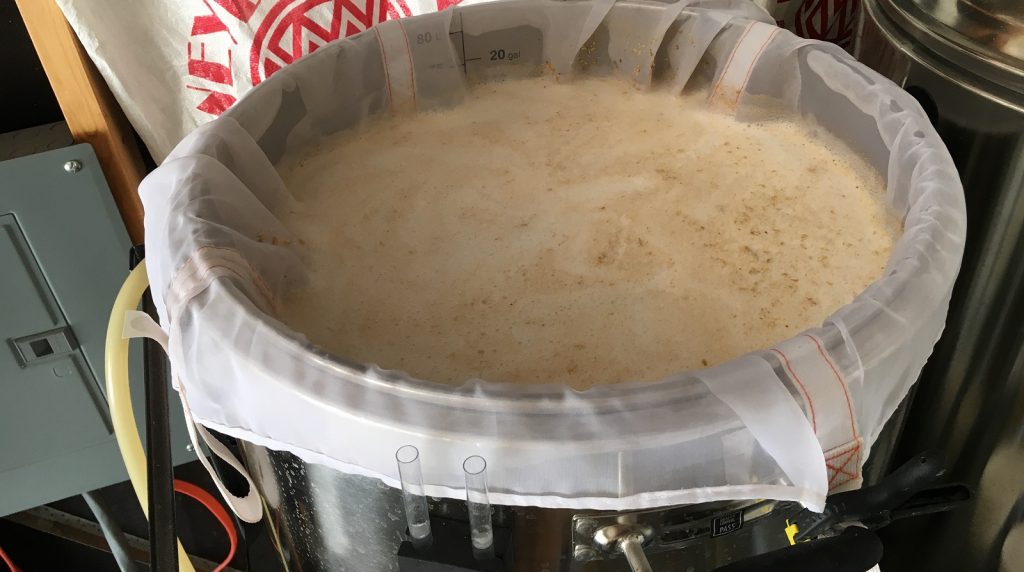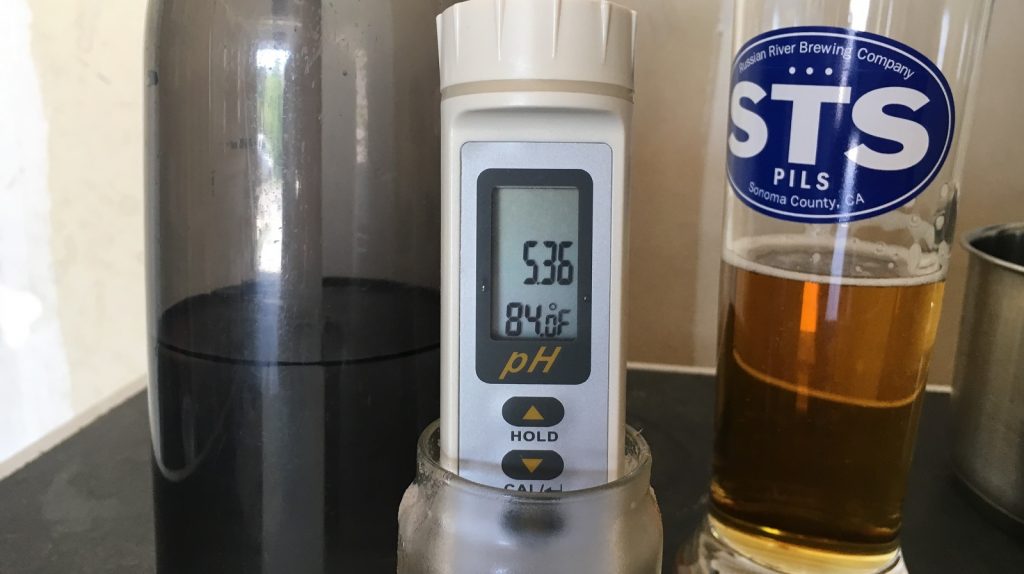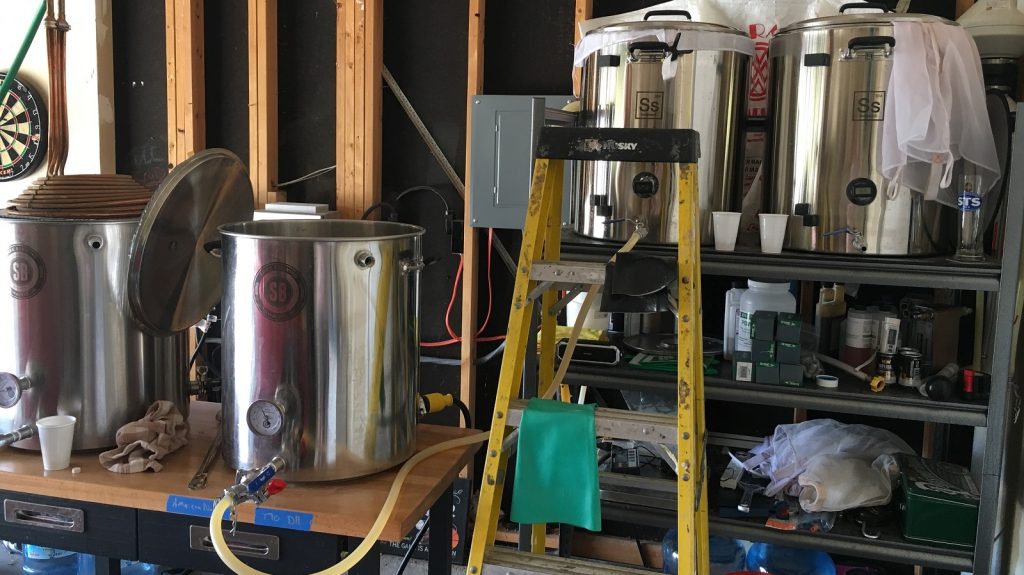Author: Jake Huolihan
Released by Yakima Chief Hops (YCH) earlier this year, American Noble Hops were designed to impart uniquely noble hop characteristics while still maintaining the aromas and flavors of popular American varieties grown in the Pacific Northwest. This is possible due to a process that results in hops having less alpha acid and aromatic oils, similar to levels found in traditional noble hops, which allows them to impart more nuanced characteristics that work well in lighter styles like Pilsner, Kölsch, and Blonde Ale.
According to YCH, American Noble Hops are made of the strig, bract, and bracteole of whole cone hops. Seeing as YCH also produces Cryo Hops, which is the separated lupulin from hop cones, it’s a reasonable assumption that American Noble Hops are a byproduct of the Cryo Hop manufacturing process. Hence the recommendation to use American Noble Hops in less hop-forward styles– they simply pack less of a punch.
I love traditional noble hop character and consider beer styles made using them among some of my favorite. As such, I was rather intrigued when I first learned about American Noble Hops, a product that would seemingly allow me to craft great tasting lager styles using only American ingredients. With both T90 pellets and American Noble Hops of the same variety on hand, I decided to put it to the test!
| PURPOSE |
To evaluate the differences between beers made using either standard T90 hop pellets or American Noble Hops.
| METHODS |
Given the rather drastic difference in alpha acid content between the two products, the crew decided the best approach for this initial xBmt on American Noble Hops would be to bitter both with a small charge of the higher alpha T90 then use equal amounts of both in the dry hop. The goal here was to keep bitterness due to isomerization of alpha acids as well as the amount of vegetal matter equal between the batches.
Nobility
Recipe Details
| Batch Size | Boil Time | IBU | SRM | Est. OG | Est. FG | ABV |
|---|---|---|---|---|---|---|
| 5.5 gal | 60 min | 27.6 IBUs | 3.4 SRM | 1.050 | 1.014 | 4.8 % |
| Actuals | 1.05 | 1.01 | 5.3 % | |||
Fermentables
| Name | Amount | % |
|---|---|---|
| Odyssey Pilsner (Root Shoot) | 10 lbs | 90.91 |
| Vienna Malt (Weyermann) | 1 lbs | 9.09 |
Hops
| Name | Amount | Time | Use | Form | Alpha % |
|---|---|---|---|---|---|
| Loral | 20 g | 60 min | First Wort | Pellet | 10.3 |
| Loral | 60 g | 3 days | Dry Hop | Pellet | 10.3 |
Yeast
| Name | Lab | Attenuation | Temperature |
|---|---|---|---|
| Urkel (L28) | Imperial Yeast | 73% | 52°F - 58°F |
Notes
| Water Profile: Ca 41 | Mg 0 | Na 8 | SO4 45 | Cl 42 |
Download
| Download this recipe's BeerXML file |
My brew day began with me turning on my element to heat the strike water, which I’d collected and adjusted the night prior, before weighing out and milling the grains.
When the water was slightly warmer than needed, I transferred it to my mash tun for a brief pre-heat then mashed in once it had cooled to strike temperature. After gently stirring in the grains with my large whisk, I checked to ensure I’d hit my target mash temperature.

I gave the mash a quick stir every 15 minutes throughout the 60 minute rest.

A pH measurement taken about 15 minutes in showed the mash was right where I wanted it to be.

When the mash was complete, I lautered the sweet wort into my kettle.

After adding the single small kettle hop addition, I cranked my electric element back on and brought the wort up to a rolling boil.

At the completion of the boil, I chilled the wort to 95°F/35°C then split it equally between between 2 Brew Buckets.

A refractometer reading revealed the wort was sitting right at my target OG.

Each fermentor was hooked up to my glycol chiller and rapidly cooled to my preferred pitching temperature of 52°F/11°C. I then pitched a vitality starter of Imperial Yeast L28 Urkel into each vessel and hit them with 60 seconds of pure oxygen.
After a week of fermentation, signs of activity had waned, so I introduced the variable by adding 2 ounces of Loral to each batch, one receiving T90 pellets and the other getting a charge of American Noble Hops.
After 3 days with the dry hops, I crashed the beers to 40°F/4°C to encourage the hops to settle out. A hydrometer reading at this point revealed a very slight difference in FG, which I presumed was likely due to normal between-batch variation.

Following a 2 day cold crash, I kegged the beers.

The filled kegs were placed in my cool keezer where they were burst carbonated overnight, after which I reduced the pressure and let the beers lager for 2 weeks before serving them to participants.

| RESULTS |
A total of 19 people of varying levels of experience participated in this xBmt. Each participant was served 2 samples of the beer made with T90 pellets and 1 sample of the beer made with American Noble Hops then asked to identify the sample that was unique. At this sample size, 11tasters (p<0.05) would have had to correctly identify the unique sample in order to reach statistical significance though only 8 tasters (p=0.28) made the correct selection, indicating participants in this xBmt were unable to reliably distinguish a pale lager dry hopped with T90 pellets from one made with American Noble Hops.
My Impressions: Out of the 5 semi-blind triangle tests I attempted, I correctly chose the odd-beer-out 4 times. The beers tasted nearly identical to me, though the one made with T90 pellets had a slightly stronger aroma and flavor reminiscent of fruity pebbles than the American Noble Hops beer. If forced to choose, I’d say I preferred the beer made with American Noble Hops, only because I felt the subtlety worked better in a Pilsner.
| DISCUSSION |
While the use of what is ultimately a byproduct of the process to make something else might seem a bit dodgy to some, others might view YCH’s American Noble Hops as a clever way to impart a more subtle American hop character to lighter beers. Since all the bits of a hop cone that are leftover once the lupulin has been removed for Cryo Hops do contain oils and alpha acid, it makes sense that using them in beer would result more nuanced aromas and flavors. Curiously, tasters in this xBmt were unable to reliably tell apart beers dry hopped with equal amounts of either T90 pellets or American Noble Hops, suggesting whatever variance in pungency exists between the products wasn’t enough to produce a perceptible difference for this set of tasters.
One caveat to this xBmt is that both beers were bittered using T90 pellets and all other hop additions were made post-fermentation. We decided to approach this initial xBmt on American Noble Hops in such a manner in order to focus on the aroma and flavor impact of this new product, while controlling for level of bitterness and amount of vegetal matter in the kettle. Given their drastically lower alpha acid content, using American Noble Hops throughout the boil would presumably result in lower levels of bitterness compared to a beer hopped with similar amounts of T90 pellets, and adjusting for this could plausibly produce noticeable differences in aroma and flavor.
Going into this xBmt, I was admittedly biased by recent experiences with beers made with American Noble Hops that, to my tastes, weren’t very good at all. Going against my expectations, I actually enjoyed the American Noble Hops beer from this xBmt a little more than the one hopped with T90 pellets, as it was a small degree more nuanced, which seemed more appropriate for the style. However, I’m not convinced I couldn’t have accomplished a similar subtlety in the T90 beer by simply reducing the amount of hops I used, and for that reason I’ll likely be sticking to standard pellets for the time being.
If you have any thoughts about this xBmt, please do not hesitate to share in the comments section below!
Support Brülosophy In Style!
All designs are available in various colors and sizes on Amazon!
Follow Brülosophy on:
FACEBOOK | TWITTER | INSTAGRAM
If you enjoy this stuff and feel compelled to support Brulosophy.com, please check out the Support page for details on how you can very easily do so. Thanks!















8 thoughts on “exBEERiment | T90 Pellets vs. American Noble Hops In A German Pils”
You pitched the yeast and then oxygenated. A fellow homebrewer once said to oxygenate first, and then pitch the yeast. That way you don’t “freak out” the yeast near the wand diffuser with concentrated oxygen. A little overly sensitive to the yeasties perhaps ?
I’ve never heard this before and would be shocked if true, but you never know I guess.
Interesting xbrmt! Looking forward to seeing more of these tried out. Listening to Denny and Drew, it’s sounds like American nobles would be good for adding an American twist on some classic beer styles. Especially when used late and in dry hop. Sometimes you want that American flavor but not all the bitterness.
As someone who loves American hops in traditional euro style lagers I’ll simply continue to use subdued charges of my favorite hops instead of AN.
I think a more interesting experiment would be to brew a pilsner with traditional noble hops and with these manufactured “noble hops” and compare the two.
Dry hopping will reduce FG due to hops amylase. Perhaps the 1 point difference in FG here was due to more amylase in the regular pellets. Is amylase more concentrated in the lupulin glands than the rest of the cone?
I assumed the difference was due to that as well. Cool to see it play out.
No knock on the experiment but I HATE that the the term “Noble Hops” is being co-opted. These are not noble hops, they are American hops that have been processed so that they can be used in a new way. Calling them “noble” confuses a well-established historical term with a marketing concept (that may actually help make some interesting, good beer). Call them something else.